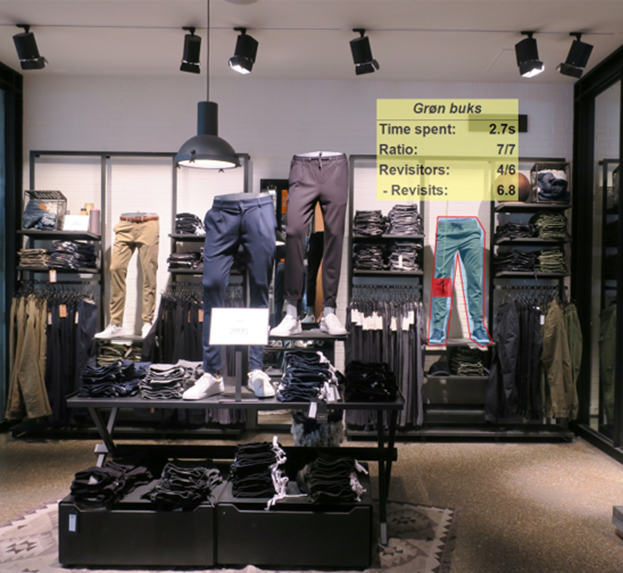Better store design using eye tracking studies
In 2018, FORCE Technology conducted a comprehensive eye tracking study for JACK & JONES in three of their stores to study how customers navigate the store and what visually piques — or does not pique — their interest. The result of this project was evidence-based advice that will be used as the brand develops its future store concepts.
Lacking knowledge
JACK & JONES's story began in 1990, when Danish company BESTSELLER sent a young lad to a fashion expo in Oslo together with a modest, but carefully chosen collection targeted toward young men. The reception it got exceeded all expectations. Thus, was born a new men's brand. In the years that followed, JACK & JONES showed themselves to be one of the strongest denim brands on the market. Within just five years, the brand had opened several hundred stores. Today, JACK & JONES is one of Europe's leading producers of men's clothing, with more than one thousand stores in 38 countries.
Despite the brand's major success and its broad foundation of experience, there was still an internal need for more concrete knowledge regarding customers' behaviour and experiences. JACK & JONES was particularly interested in learning more about how customers navigate their stores, what grabs their attention, and what does not. According to JACK & JONES, insights like these are crucial to developing new store concepts that captivate and inspire customers.
For that reason, the brand hired FORCE Technology's Applied Psychology Division to plan and conduct a consumer psychology study. The goal of the study was to gather knowledge about customers and use psychological theory to translate that knowledge into specific recommendations.


Efficient data collection and analysis
The Applied Psychology Division has many years of experience in studying consumers' behaviour. Over the years, it has acquired skills in a range of techniques, including the use of eye tracking together with psychological analyses, in order to demystify customers' behaviour.
Eye tracking is a technology that provides insight into what consumers look at, how long they look at it, how they move their gazes from one focal point to the next in a visual field, and how they move about in a given environment. Of equal importance, eye tracking can also reveal what people do not see or discover. However, eye tracking does not provide insight into the way visual impressions are processed subjectively, so it is always employed in combination with quantitative and qualitative psychological studies.
In this case, psychologists recruited a large group of consumers representative of the store's own customers in order to collect data. Participants put on eye tracking glasses and were given a realistic shopping task to complete in the store. Afterwards, they were interviewed, and clips from the eye tracking video were played back and discussed in order to gain deeper insight into their behaviour and experiences in the store. This particular study design was especially advantageous because it allowed the consumers to more readily recall their experiences in the store and put them into words.
Customer behaviour and attention
One of the conclusions from collecting and analysing the data was that customers generally ignored signs for sales and offers if they were printed in blue. The store in Herning was offering 20% off of all items, but despite the many blue signs advertising the sale throughout the store, only one customer noticed the offer. In practical terms, this may mean that JACK & JONES missed out on sales it could have made had the customers seen and been attracted by the sale. Key to this observation is that for information to draw customers' attention, there needs to be a clearer contrast between what should be in the foreground and what should be in the background. For example, colours that break away from the store's basic colour scheme can be identified and used.
It also was found that customers generally looked more at jeans placed on tables in the store compared to jeans in displays. This was in line with the fact that customers were able to touch the jeans on the tables, making it easier to investigate them. On the other hand, the eye tracking recordings showed that customers looked at the jeans in displays before looking at those on tables. Specific knowledge like this is crucial to defining the goal of each element in a store and its design.
The collected data also showed which parts of the store customers moved to less frequently, which areas received a lot of attention, which items customers touched the most, which areas they experienced challenges in, and how much they watched the digital screens placed in the store.
Concrete knowledge and recommendations
All the data were analysed from a psychological perspective and translated into concrete knowledge about the consumers, as well as specific recommendations for JACK & JONES. These recommendations included elements for the brand to avoid as it develops future store concepts and elements, as well as those which it would be beneficial to focus on, moving forward.
